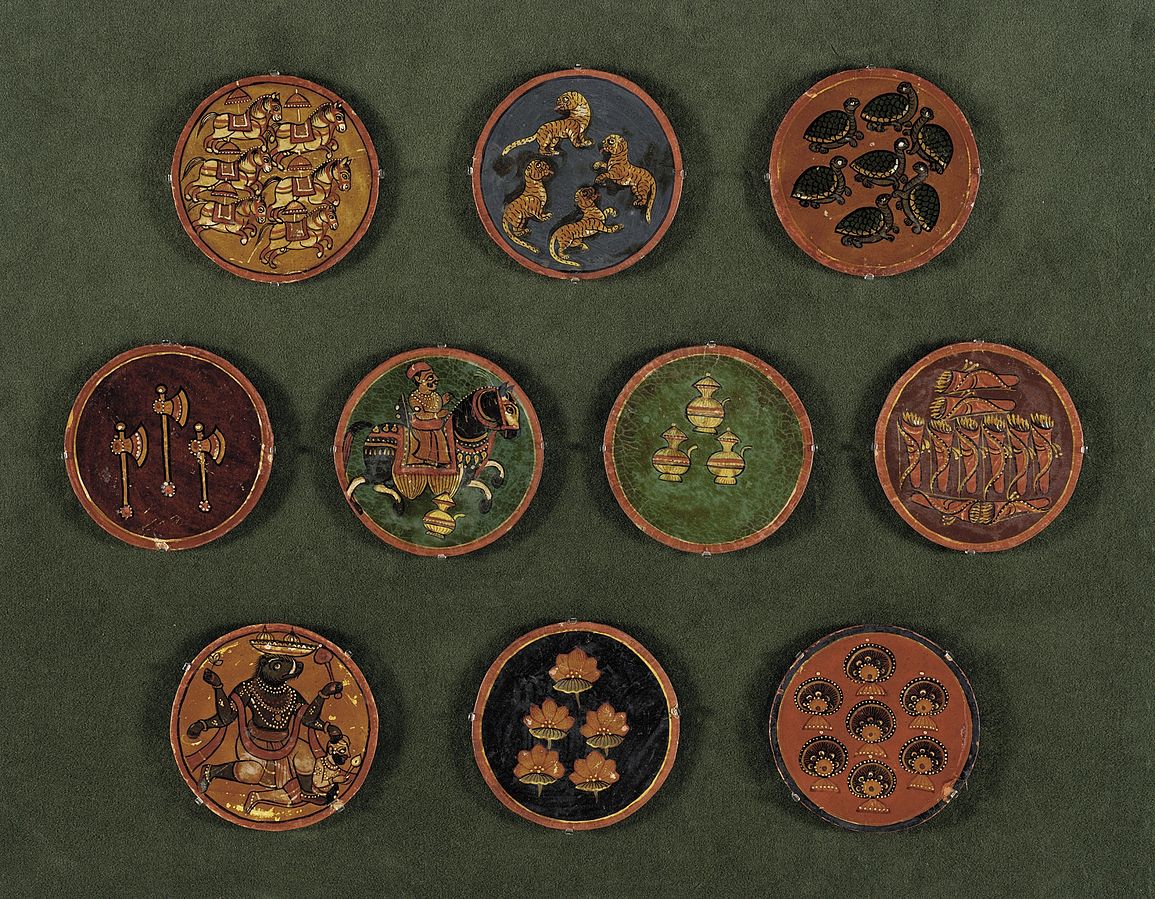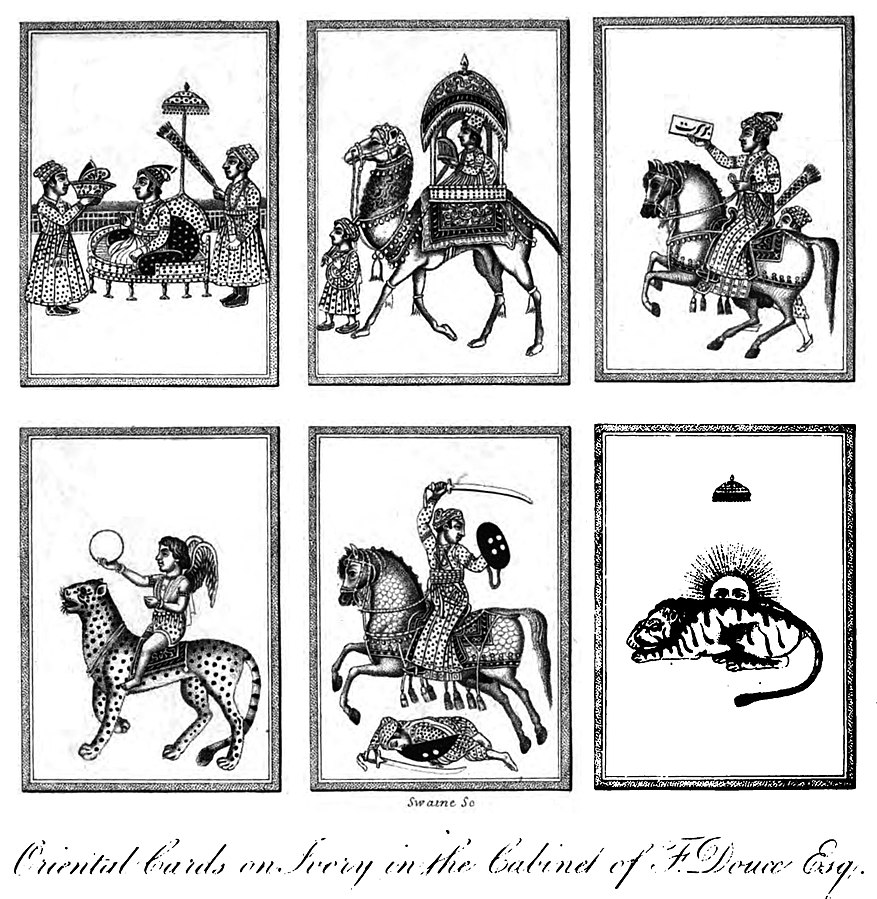If you love card games then you must know these – Poker, Rummy, and Ganjifa. Wait, what’s Ganjifa?

Ganjifa is an ancient Indian card game played with beautifully painted cards. The name Ganjifa is derived from the Persian name ‘Ganjifeh’ which translates as ‘playing cards’. Although the origin of the game is still debated, it was recorded that the game was played widely in Arabic countries, China and India. It is believed that the advent of Persians in the 16th century introduced the game in India and was highly popularised during the Mughal period. Thereafter, the game saw a decline and is barely remembered today.
In India, the game was widely played in Mysore, Rajasthan, Gujarat, and Maharashtra and the cards reflected the culture and tastes of the locals of that region.
Making of the Cards
Ganjifa cards were of different materials; ivory and shells for Royalty and wood, paper or palm leaves for the commoners. When the game was brought to India, the cards were rectangular and then Indians developed the popular circular version. The pictures were intricately hand-painted with colors extracted from organic and vegetable dyes using brushes made from squirrel hair. The process is long and intricate and it could take 30 days to make a single set!
Multiple Versions of Ganjifa
Each region in India had its own version of the game and hence the number of cards in a deck varied. Most basic versions had 96 cards while some bigger versions had up to 600! Just imagine playing that!

Generally, the pack has suits numbered from 1- 10 and two face cards – a King and a Vizier. The King was always the most powerful card and next was the Vizier. In most sets, the cards held pictures from Hindu scriptures, especially the Ramayana and Mahabharata. This was mainly to keep the stories alive.
Ganjifa Game Play
Ganjifa is usually played among three and sometimes involved four. The game goes on in an anti-clockwise direction with each round requiring the players to place their highest denomination. It is crucial to keep track of all the cards that have been played. The player with most cards at the end wins the game. Besides testing the memory and strategic skills of the player, the game also tests knowledge of Hindu scriptures and stories.
Popular versions of Ganjifa
Among the numerous versions, the Dashavatara Ganjfa that illustrated the ten avatars (incarnations) of Lord Vishnu was immensely popular. Each deck was comprised of 120 cards – ten suits of 12, one suit for each avatar. This version was popular among the Brahmins who believed that the game would wash away the sins of the players.
Ganjifa in India is commonly associated with Mysore as the game was patronized even after the Mughal age by the Wodeyars in the 19th century. The game was made more complex and challenging with bigger suits.
Present-day Status
Ganjifa is no longer played, however, the art is still remembered in some places. British museums have several collections of Ganjifa cards on display. Artisans, especially from Mysore have tried to revive the art but the lengthy process involved in making the cards are not commercially viable and hence is practiced by a handful.
While Poker and Rummy are globally commercialized with online game rooms and huge casinos, Ganjifa, an ancient historical version has become extinct. This is yet another example of abandoning traditional forms and popularising commercial practices. While several attempts have been made to revive the game in India, none of them have been successful due to a lack of promotion and recognition.
